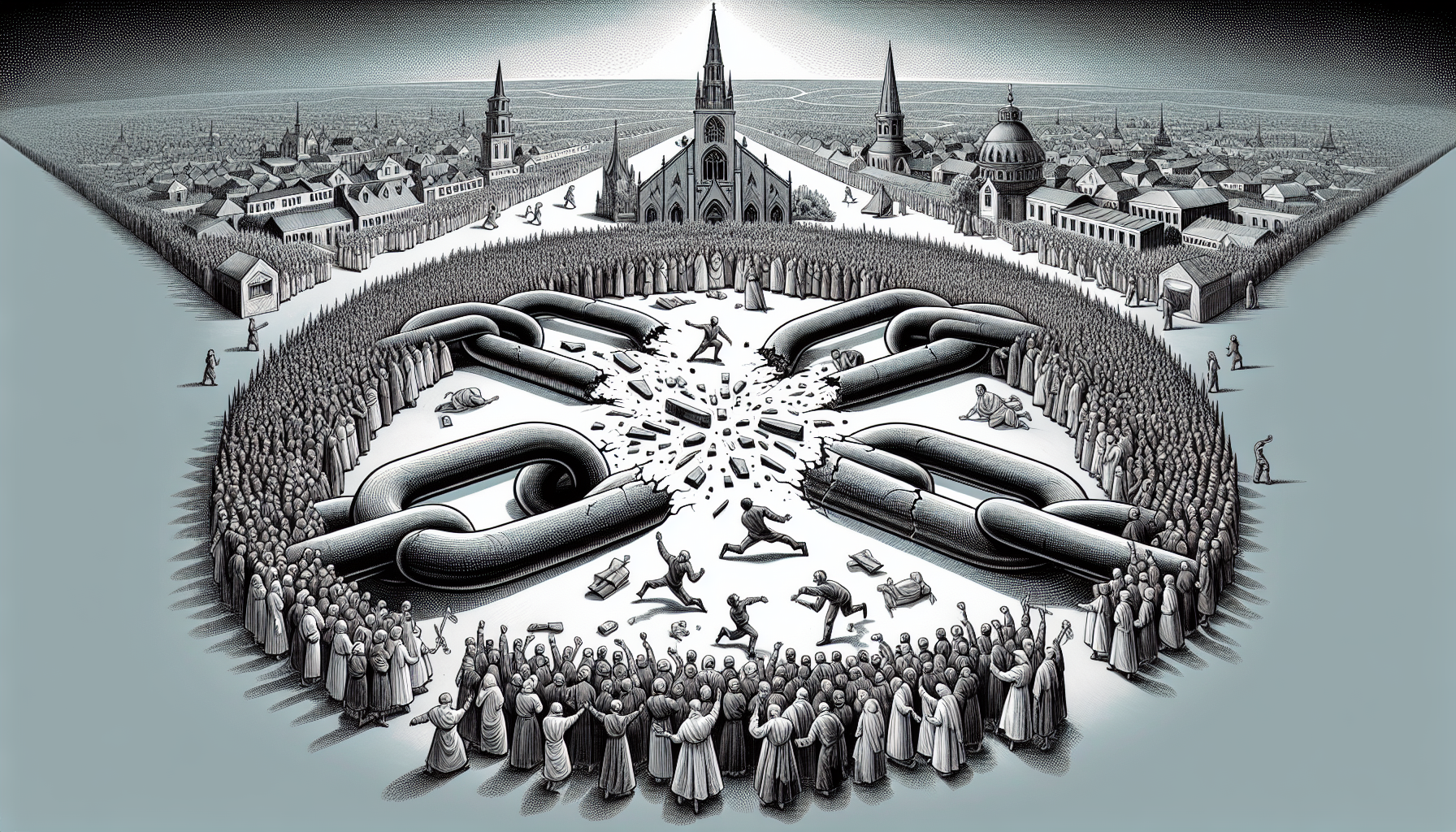Are you curious about the biggest controversy surrounding Mormonism? Look no further, as we delve into the topic that has garnered attention and sparked debates. From polygamy to fundamentalism, this article explores the most significant controversies surrounding the Mormon faith, providing you with a glimpse into their impact on both the religion and its followers. So, sit back, relax, and get ready to discover the intriguing world of the biggest Mormon controversy.
Polygamy
Early practice of polygamy
The early practice of polygamy within Mormonism is a topic that has often generated controversy and curiosity. In the early days of the faith, the practice of plural marriage was not only encouraged but also considered a sacred principle. It was believed that practicing polygamy could lead to higher levels of exaltation in the afterlife. This belief was deeply rooted in the teachings and revelations of Joseph Smith, the founder of Mormonism. Smith himself had multiple wives, including his first wife Emma Smith. The early practice of polygamy was seen as a way to establish a righteous and strong community.
Abandonment of polygamy
Polygamy, however, faced increasing opposition from both the United States government and the general public. The practice was seen as a violation of societal norms and a threat to traditional marriage. As tensions escalated, the Church of Jesus Christ of Latter-day Saints (LDS Church) issued the 1890 Manifesto, officially announcing the discontinuation of new plural marriages. This marked a significant turning point for the LDS Church and its relationship with the broader American society. The decision to abandon polygamy was met with mixed reactions, with some members embracing the change while others held on to the belief that plural marriage was an essential doctrine.
Modern fundamentalist sects
While the official LDS Church disavows the practice of polygamy, some fundamentalist sects still engage in the practice today. These groups consider themselves to be the true heirs of the early teachings of Joseph Smith and maintain a belief in the importance of practicing polygamy. However, it is important to note that these fundamentalist sects are not affiliated with the mainstream LDS Church and often face legal and societal challenges as a result of their beliefs and practices. The existence of these sects adds complexity to the ongoing discussions surrounding the historical and contemporary role of polygamy within Mormonism.
Race and the Priesthood
Origins of the priesthood restriction
One of the most significant controversies in Mormon history is the priesthood restriction placed on individuals of African descent. This practice, which prohibited Black individuals from holding the priesthood or participating in certain temple ordinances, was not based on any specific revelation but rather became institutionalized within the LDS Church. The origins of this restriction can be traced back to the early teachings of church leaders who believed in the concept of “racial inferiority.” These beliefs were prevalent in the broader society at the time and influenced the views of prominent Mormon leaders.
Lifting of the priesthood ban
In 1978, under the leadership of President Spencer W. Kimball, the LDS Church announced the lifting of the priesthood ban. This revelation, known as Official Declaration 2, marked a significant and long-awaited change within the LDS Church. The decision was met with relief and celebration by many members of the church, as it represented a step towards racial equality and inclusivity. The lifting of the priesthood ban signaled a shift in the church’s stance on race and was a significant milestone in its ongoing efforts to address historical injustices.
Continuing discussions and implications
While the priesthood ban has been officially lifted, the discussions surrounding its origin and implications continue within the LDS Church. The practice of restricting the priesthood based on race remains a sensitive and complex topic, with many seeking a better understanding of its history and the role racism played in its development. The lifting of the ban also brought attention to the need for increased diversity and inclusion within the church. Efforts have been made to promote racial understanding and unity, but ongoing discussions and efforts are essential to address the legacy of the priesthood ban and create a truly inclusive religious community.
Plural Marriage Afterlife
Doctrinal beliefs on eternal polygamy
Within Mormon doctrine, the belief in eternal polygamy remains a topic of discussion and debate. The concept of eternal marriage, including the potential for plural marriage in the afterlife, is emphasized in LDS teachings. It is believed that a righteous man who has entered into multiple marriages may have the opportunity to be sealed to all of his wives for eternity. This belief is rooted in the teachings of Joseph Smith, who declared that the practice of plural marriage was necessary for exaltation and the highest degree of salvation.
Controversies surrounding women in eternal polygamy
The concept of eternal polygamy has often been a source of controversy, particularly regarding the role and agency of women. Critics argue that the practice of multiple wives in the afterlife perpetuates patriarchy and undermines women’s autonomy and equality. The idea that a woman will share her husband with other wives for eternity raises questions about her individual identity and fulfillment. The controversy surrounding eternal polygamy has led to ongoing discussion and theological exploration within the LDS Church about the agency and status of women in the afterlife.
Modern views and practices
In recent years, the LDS Church has sought to clarify its teachings on eternal polygamy and address some of the concerns raised by critics. Church leaders have emphasized that the practice of plural marriage in the afterlife is a choice, not an obligation. Women are taught that they have agency and the right to make their own decisions regarding eternal relationships. Additionally, the LDS Church has taken steps to distance itself from fundamentalist sects that continue to practice plural marriage, emphasizing that such practices are not aligned with the teachings of the mainstream church. The modern views and practices surrounding eternal polygamy reflect the ongoing evolution and adaptation of Mormon teachings and doctrines.
